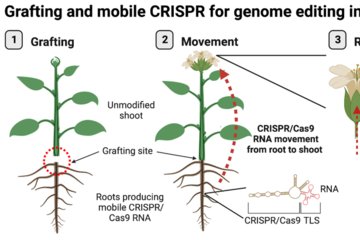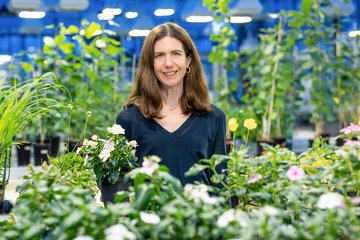Census in the plant root
Bacterial communities that colonise plant roots reflect the plant’s species affiliation and location preferences
Plants sustain bacterial communities in their roots that are beneficial to them. Klaus Schläppi and Paul Schulze-Lefert from the Max Planck Institute for Plant Breeding Research in Cologne have shown that these communities are surprisingly robust and essentially consist of a few families of bacteria. Their composition depends on the plant’s family affiliation and living environments.

The soil is the most species-rich microbial ecosystem in the world. Some of these soil bacteria also colonise the plant roots. The question therefore arises as to whether the microbial life in the roots reflects that of the soil flora, or whether the host plant has a direct influence on the composition of the bacteria. In other words: Does a plant family host a selection of soil bacteria that is typical to that family and is more or less the same for each representative? Schläppi, Schulze-Lefert and their colleagues investigated this question and researched the degree of similarity between the bacterial communities found in different but closely-related plant species. For their census, they studied four species of Brassicaceae in two natural habitats and in the greenhouse. In terms of evolutionary history, these species were reproductively isolated from each other between 8 and 35 million years ago.
The plants in question are Arabidopsis thaliana and its “younger” sister species Arabidopsis lyrata and Arabidopsis halleri, and the “older” species” Cardamine hirsuta. Arabidopsis thaliana, Arabidopsis lyrata and Cardamine hirsuta do not like to compete for nutrition and grow in dry open locations such as steppes and mountain slopes. Arabidopsis halleri also copes well with competition for nutrition and can survive on wet meadows.
“We observed two fundamental patterns in our census,” says Schläppi, commenting on the study findings. “Whereas one half of the bacterial community in the plant root is representative of the soil flora which are dependent on the environment, the other half contains bacteria that are not affected by it. Interestingly, this conserved core consists of a small number of bacterial lineages comprising bacteria from three families.” However, differences exist between the numbers of the bacteria present. Some of the examined plants host more representatives of one bacterial family, while others have more of the other family. “This is our second important observation: these differences cannot be explained by the evolutionary pedigree of the examined plant species.”

In the view of the Cologne-based scientists, the differences arise from the different living environments of the plants (habitats). Arabidopsis thaliana and Arabidopsis lyrata typically colonize similar environments and they also have the most similar microbial communities. However, Arabidopsis lyrata and Arabidopsis halleri are the most closely-related species. “It is very likely that the quantitative differences between the bacterial communities also relate to the species-typical adaptation to the habitat,” explains Schläppi.
It is not possible to say at present whether the Brassicaceae deliberately “invite” the three prominent families of bacteria to colonise their roots and give them a molecular “admission ticket”, or whether the three prominent bacterial families are simply more successful at overcoming their soil-derived competitors. Schläppi and his colleagues suspect that both processes play a role here. The competition factor should not be underestimated, in particular as plants are in principle attractive for most species of bacteria. The plants secrete part of the glucose they produce during photosynthesis through the root into the soil. “Naturally, most bacteria want to get at these sugar bowls,” says Schläppi. “We assume that the plants obtain valuable services from the root-associated bacteria in exchange. Otherwise, the symbiosis would not work.”
The exact nature of these services is something that the scientists would like to discover next. Two are already obvious: The bacteria help the plants to access certain nutrients, for example soluble phosphate, and they help them to keep pathogens lurking in the soil at a distance.
HK/HR













